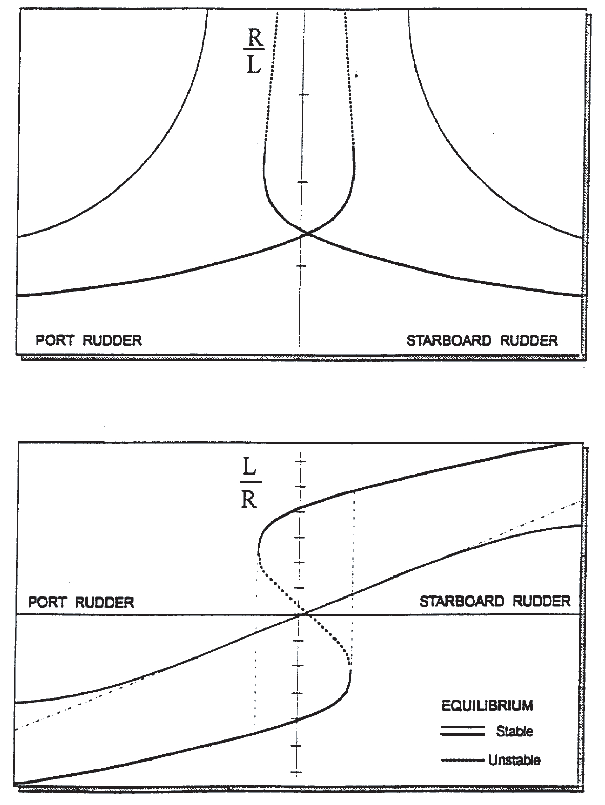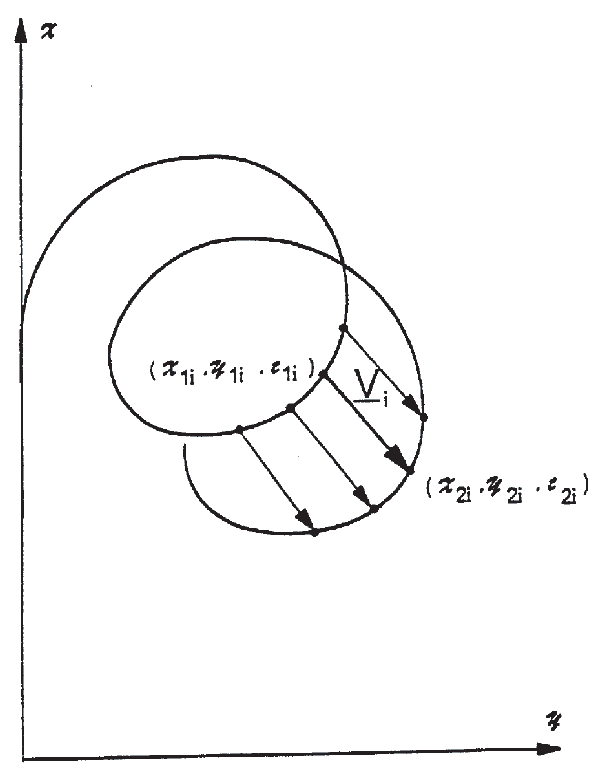3.5.2.1 The mathematical model that can be used
for the prediction of the manoeuvring performance depends on the type
and amount of prepared data.
3.5.2.2 If there is no available data, under assumptions
that resistance and self-propulsion factors are known, a set of approximate
formulae for estimation of the derivatives and coefficients in the
mathematical model will become necessary to predict the ship’s
manoeuvrability.
3.5.2.3 If there is enough experimental and accumulated
data, it is desirable to use a detailed mathematical model based on this data. In
most cases, the available data is not sufficient and a mathematical model can be
obtained by a proper combination of different parts derived from experimental data
and those obtained by the estimated formulae.

Figure 1 The equilibrium yaw rate/rudder angle relation
Figure 2 Definitions used on turning circle test
Figure 3 Zig-zag 10°/10° test
Figure 4 Definitions used in stopping test

Figure 5 Turning trajectory in wind, waves and current